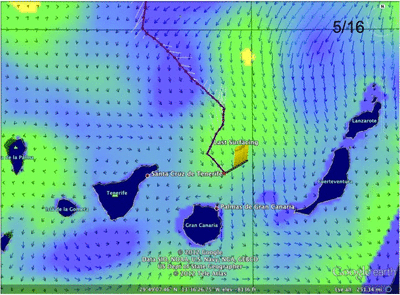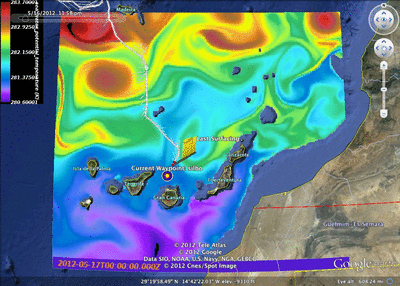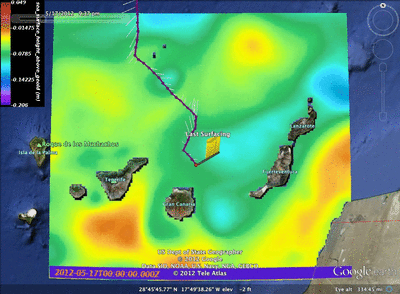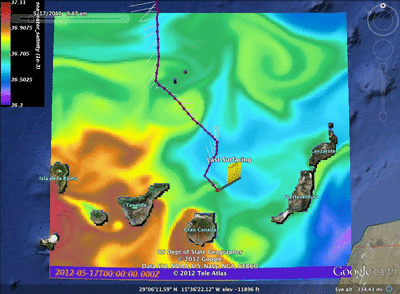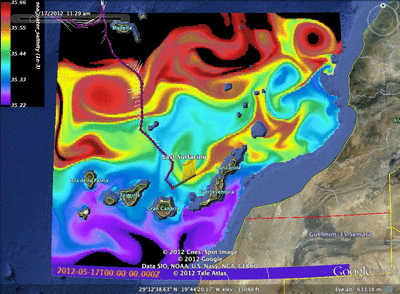Hey all,
Over the past two and a half weeks, 29 has been put through a number of test missions in an attempt to see if she is suited for her long duration flight as she kicks off the Challenger Mission in the upcoming months.
First off, we set the limits for our testing area. Where we crossed the shelf, we were dealt an area bound by two large warm eddies, one to our north and one to the south, the Gulf Stream to our east, and the New Jersey Shelf to our west.
The test path we chose was to run back and forth in our test bed parallel to the shelf. However, before we even had a chance to start our test missions, we found our first anomaly.
As we approached the way point before our turn to the North West, 29 mysteriously turned to the south even though the current was pushing us directly at our way point. After further investigation, we discovered that this was due to the gliders thought process. What had happened was that Challenger got close enough to the way point that given the strength of the current, she thought that she was going to over shoot the way point while on her dive. Because of this, 29 aimed itself in the opposite direction as to fight the current that was helping us, thus causing the turn to the south.
As for the tests, we started off with making sure she is capable of diving the full water column. This is done by stepping down, or pushing the depth we dive to gradually down over the course of a number of segments:
Once we completed this, the next on our list was to do a spin test. This test sets the fin to one side and holds it there for the entirety of the dive.
By keeping the fin stationary to one side, the glider is sent into a spin as it dives and climbs. In theory, the glider should then go down and come back up in the same location, but due to currents, both surface and subsurface, we drift. Then by comparing the drift to the gliders calculation of the currents, we can measure the accuracy of the gliders calculation for depth average currents. After completing the test, we found the error to be a little over 20˚ which was deemed acceptable.
Next we looked into some of the engineering variables needed to optimize flight for the gliders. This included adjustments made to the placement of the fin offset, dead band, and gain with various combinations of the three to see which settings would be optimal for our missions. A full listing of the tests and results can be found here.
Our final test was to see if we could successfully inflect at depth. This was proposed a few times over the course of Silbo’s flight from Iceland to the Canaries due to strong surface currents that were harmful while at depth the currents were more favorable. So if we were able to make our top inflections at depth, we could minimize our time spent in the poorer conditions.
It was a success! 29 did two tests, one test with two dives between 100m and 400m, and a second test with dives between 200m and 400m.
Now that we accomplished a majority of what we wanted to test (also our batteries have run pretty low), we have set the way point back towards Atlantic City to try and cross the shelf before the weekend in preparation for a recovery early next week.





























































